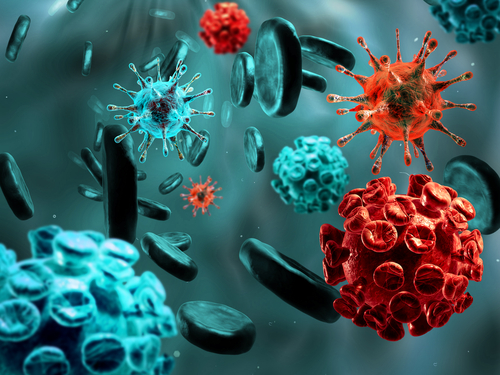3 Forms of Angioedema are Distinguished by Different Biological Mechanisms, Study Finds

A study that examined three forms of angioedema suggests there are different processes contributing to the development of each disease.
Researchers found that patients with angioedema of unknown cause have significantly different clinical manifestations compared to patients with hereditary angioedema caused by a genetic deficiency in the C1-inhibitor protein.
The study, “Idiopathic Nonhistaminergic Acquired Angioedema Versus Hereditary Angioedema,” was published in the Journal of Allergy and Clinical Immunology.
Angioedema refers to a disease that is characterized by swelling of the lower layer of skin and tissue just under the skin or mucous membranes.
Recurrent angioedema may be accompanied by wheals, which are small, raised swellings on the skin that often are itchy and better known as welts or hives.
Angioedema without wheals may include a disease known as idiopathic nonhistaminergic acquired angioedema (InH-AAE).
A diagnosis of InH-AAE is made by thoroughly investigating the patient’s medical history, by excluding other diseases associated with angioedema of known cause, and when patients fail to respond to antihistamine therapy. Currently, there are no specific laboratory guidelines or tests that can help establish a molecular diagnosis of InH-AAE.
InH-AAE often is associated with developing severe complications. However, the mechanisms that lead to the development of InH-AAE are not fully understood, and there is not a properly defined therapy for the disease.
So, researchers conducted a study of 46 patients to better understand the clinical features of InH-AAE in relation to types of hereditary angioedema — hereditary angioedema of unknown origin (U-HAE), and hereditary angioedema with C1-inhibitor deficiency (C1-INH-HAE).
First, researchers investigated the mean age of patients in each subgroup. Interestingly, the mean age at the onset of symptoms was 36 years in patients with InH-AAE, 13 in patients with C1-INH-HAE, and 29 in patients with U-HAE. This established that the age of onset is much higher in patients with InH-AAE.
Next, researchers found that 56% of patients with InH-AAE, 59% of those with C1-INH-HAE, and 48% of those with U-HAE, experienced more than 12 edema episodes during one year.
Among patients with C1-INH-HAE, 92% of patients developed edema of the extremities, 51% developed edema of the upper airways, and 75% developed edema of the gastrointestinal tract.
These manifestations occurred less frequently in patients with InH-AAE. In fact, only 54% of InH-AAE patients developed edema of the extremities, 28% developed edema of the upper airways, and 20% developed edema of the gastrointestinal tract.
Patients with U-HAE also exhibited low levels of these symptoms. Only 37% of U-HAE patients developed edema of the extremities, 29% developed edema of the upper airways, and 20% developed edema of the gastrointestinal tract.
In contrast, facial edema occurred at much lower levels in patients with C1-INH-HAE (15%) compared to patients with InH-AAE (67%) and U-HAE (59%).
Overall, results from this study indicate that the clinical manifestations of patients with InH-AAE are much different from those with C1-INH-HAE, which suggests there are different biological processes that lead to the formation of edema in these two diseases.
“The close resemblance of the clinical manifestations in InH-AAE and U-HAE might suggest a similarity between the pathophysiology of these conditions,” they added.






